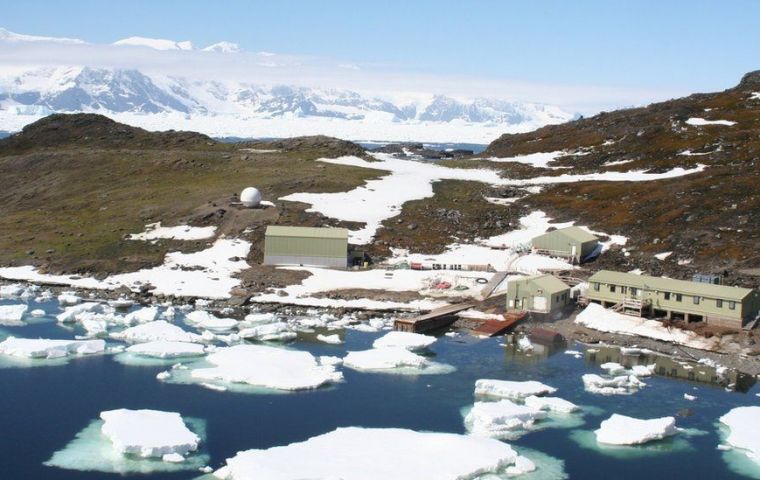MercoPress. South Atlantic News Agency
Signy Research station 75th anniversary; RRS Sir David Attenborough visit
 2022 has been a special year for the Signy Research Station since it celebrated its 75th birthday.
2022 has been a special year for the Signy Research Station since it celebrated its 75th birthday. This week RRS Sir David Attenborough visited South Georgia arriving at the upgraded wharf for the first time at King Edward Point marking a new chapter for polar science
The Falkland Islands flagged icebreaker also made its first and last call of the season to Signy island, picking up the 21/22 station team as they close down the station for another year.
2022 has been a special year for the Signy Research Station since it celebrated its 75th birthday. Scientific research began on Signy Island in March 1947 when a three-man team established a site in Factory Cove above the old whaling station.
Signy is occupied only during the austral summer, research focuses on the island's bird populations (one in ten of the world's 50,000 southern giant petrels live around Signy), and land-based ecology.
Because terrestrial ecosystems in the Antarctic are so simple – from mosses and bacteria to mites, the largest terrestrial organism – they allow biologists a rare opportunity to understand fundamental processes that would be impossible to unravel in more complex ecosystems.
Signy’s research also included long-term studies of several species, such as Adélie, chinstrap and gentoo penguins. Populations of the southern giant petrel have been monitored at Signy since the 1960s, and in 2015 BAS biologists warned that its population had halved over the last fifty years..
Signy Island is one of the remote South Orkney Islands, which lie more than 1300 km from the Falkland Islands, 900 km from South Georgia and 600 km from the Antarctic Peninsula.
Around half of the island is covered by a permanent ice-cap. The highest point, Tioga Hill, is a rock outcrop in the middle of the ice. The ice-cap descends to the sea via two glaciers, the McLeod and the Orwell.
The east and west coasts are generally ice-free during summer. New areas of rock exposed every year as Signy’s glaciers and ice fields retreat due to rising temperatures.
The rest of the Island is covered in lakes, of which there are 16 permanent, and some seasonal lakes. Snow-free ground in summer includes steep mountain slopes, mud flats as well as higher ground with extensive moss banks.





Top Comments
Disclaimer & comment rulesCommenting for this story is now closed.
If you have a Facebook account, become a fan and comment on our Facebook Page!